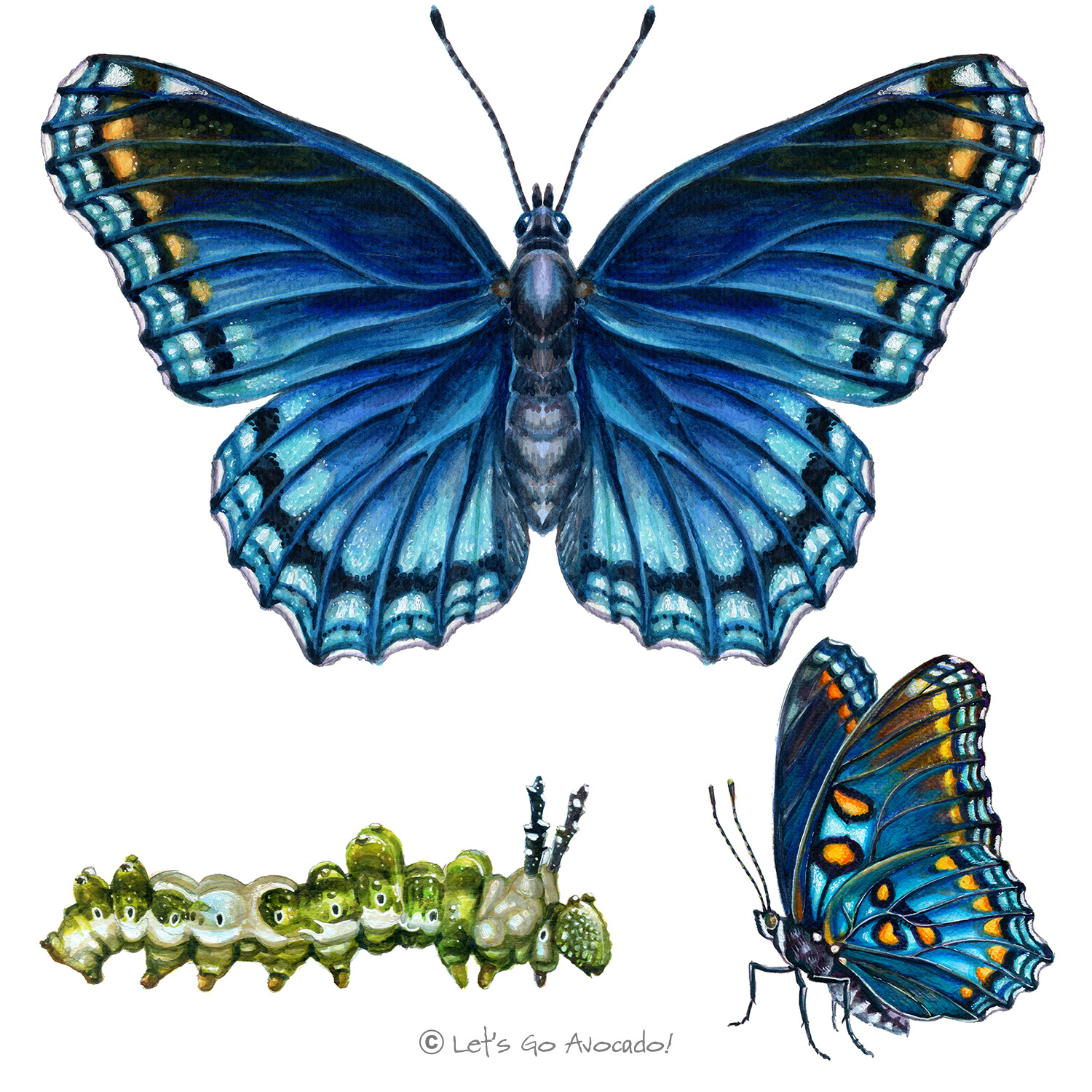

Red Spotted Purple Butterfly
White Admiral (in certain regions)
Limenitis arthemis astyanax
This page may contain affiliate links.
Read our disclosure and privacy policy here.
The Red Spotted Purple butterfly is a North American butterfly that belongs to the brush-footed butterfly family. It is admired for its stunning coloration. It is a subspecies of the White Admiral Butterfly.
Red Spotted Purple Butterfly
Common Name
Red Spotted Purple Butterfly
Other Names
White Admiral (in certain regions)
Latin Name
Limenitis arthemis astyanax
Distribution
This butterfly is found mainly in North America, across a broad range including the eastern United States west to the Rocky Mountains and into parts of southern Canada.
Appearance
The butterfly displays a dazzling array of colors – shimmering blue on the upper sides of its wings, offset by bright, red-orange spots on the hind wings. The underside is a mottled combination of blue, black, and orange.
Size
The wingspan ranges between 2.75 to 3.5 inches. Caterpillars can reach lengths of up to 2 inches when fully grown.
Habitat
They inhabit a variety of wooded or forested areas including deciduous broad-leafed woods, forest edges, fields, meadows, wetlands, and even suburban gardens.
Diet
The caterpillars feed primarily on the leaves of willows, poplar, and cherry trees. Adult butterflies nectar on a variety of flowers, but they seem to have a preference for white and purple flowers, including the blossoms of spirea, privet, and viburnum.
Lifecycle
Like most butterflies, they undergo a complete metamorphosis: egg → caterpillar (larva) → chrysalis (pupa) → adult butterfly.
Defense Mechanisms
The caterpillar resembles bird droppings as a form of camouflage against predators. This form of mimicry discourages potential predators like birds from eating them. The Red Spotted Purple butterfly exhibits Batesian mimicry. Its wing coloration and pattern resemble those of the toxic Pipevine Swallowtail (Battus philenor), which deters potential predators like birds from attacking, thinking that it is toxic when it’s actually harmless.
Ecological Importance
Like all butterflies, they play a role in pollination, helping plants reproduce. The caterpillars also act as a food source for various predators, and the adults can be a food source for birds, although their mimicry makes them less appetizing.
ConservationThe act of protecting and preserving natural resources and the environment. Conservation efforts are important to protect beavers and their habitats. Status
As of 2021, the Red Spotted Purple butterfly isn’t considered endangered or threatened and can be quite common in its range.

There’s a lot to explore right where we are, in our own neighborhoods and backyards! Join us while we get off the couch and explore the everyday wonders of nature, science, space, engineering, art, and anything else we stumble upon during on our adventures.







